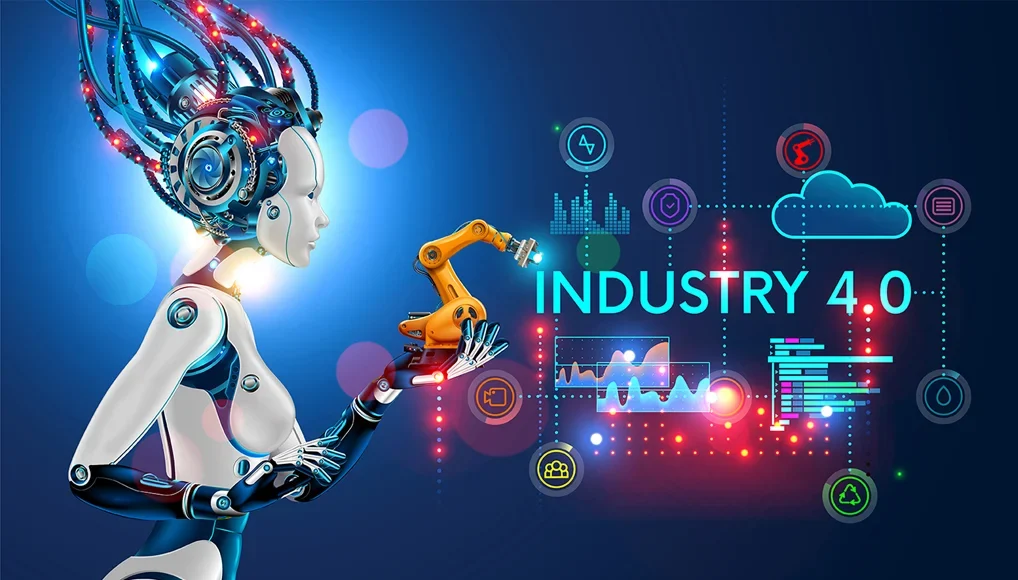Industry 4.0: The Next New Wave Across Manufacturing Industries
Industry 4.0 is Coming ! Period !
Could there be a better time to implement Industry 4.0 post the pandemic ? That I am afraid is the wrong question. The truth is Industry 4.0 is coming. Period.
Let’s look at an example. MSME have always looked up to West, for change in manufacturing trends. And there is this one trend, which surprisingly a few of the news outlet missed out. Well you can’t blame them, as so much has been written about the pandemic and the political situation, that a manufacturing Industry 4.0 trend, sometimes gets ignored.
Lets place some facts here. When the pandemic stuck The United States, they didn’t have enough Ventilators , Personal Protection Equipment ( PPE ) or masks for its population. Exports of surgical masks, ventilators and other personal protective gear to China skyrocketed in January and February, when the covid -19 was wreaking havoc in the country where it began. Yes they didn’t expect the storm would hit them. Now that’s not the reason for the article.
It was during this time, they started importing medical equipment from other countries. Despite that they just could not meet the demand. Then Oakland and Macomb counties based companies led the way, thanks to the grant given by the state department. They quickly moved into the digital-manufacturing. They used Industry 4.0 technology, to help improve the region’s manufacturing agility for PPE.
The state program will achieve multiple benefits, as it will help increase local and U.S. production of PPE to battle the covid -19 and push businesses toward Industry 4.0, which is described as the takeover of technological advances in business. The idea is simple. “US doesn’t want to rely on China for N95 masks”.
Going by news exerts, the businesses have already stepped up, and now they are looking to make it sustainable.
What else has Industry 4.0 technologies helped with in the US counties during the COVID -19 pandemic
- Digital factory and MSVI technologies used to model the TCF Center in Detroit, which served as a temporary hospital for emergency overflow
- Additive manufacturing used to produce ventilator parts, moulds and PPE.
- Big data used to assess COVID-19 spread, behaviours, and trends
- Siemens Industrial is taking the covid – 19 crisis as an opportunity to expand its technology service solutions in three key businesses -namely smart infrastructures, digital industries and large drives applications. It believes they will become more technology-driven in response to pandemic concerns.
Before the pandemic we saw the increasing digitization of manufacturing that was already happening through a combination of technologies, including the Internet of Things (IoT), big data, analytics and next-generation applications. Smart factories were developed with secure, flexible and scalable manufacturing process. This will change the level of the entire operations as McKinsey Global predicted that economic and equipment optimisation through the use of IoT will range between $1.2T – 3.7T by 2025. Now as we are in the middle of a pandemic, there is a massive temptation to switch quickly as it has its perks.
Among the new and powerful capabilities that Industry 4.0 promises are the identification of faults before they develop, increased efficiency and productivity; optimised product development and supply chains; and improved health and safety. (e.g. by utilising remote-access to take people out of potentially hazardous environments).
Realising these benefits will require a significant shift, not only in terms of how organisations use the data which they have created, but also in terms of how they share that data across traditionally practicing business departments. This is uncharted territory for the manufacturing industry, and whilst the rewards are significant, the challenges are also numerous.
Structural Challenges
One fundamental barrier preventing organisations from moving towards and industry 4.0 model lies in the way they are structured. To create products and get them to customers, manufacturers perform a wide range of activities, which generally take place in a standard set of functional units. These units include research and development, engineering and design, IT, manufacturing, logistics, marketing sales, after-sale service, human resources, procurement and finance.
Now, for the first time, these traditional sources of data are being supplemented by another source – the product itself. Smart, connected products can generate real-time readings that are unprecedented in their variety and volume.
Now with so much prominence on getting the product and build your capabilities using data points, it becomes imperative that you switch to industry 4.0. Perhaps the pandemic is driving this thought line in a few sectors already, as the chatter gets louder there is a warning there too,
“If you can’t survive COVID-19, you won’t survive Industry 4.0.”









